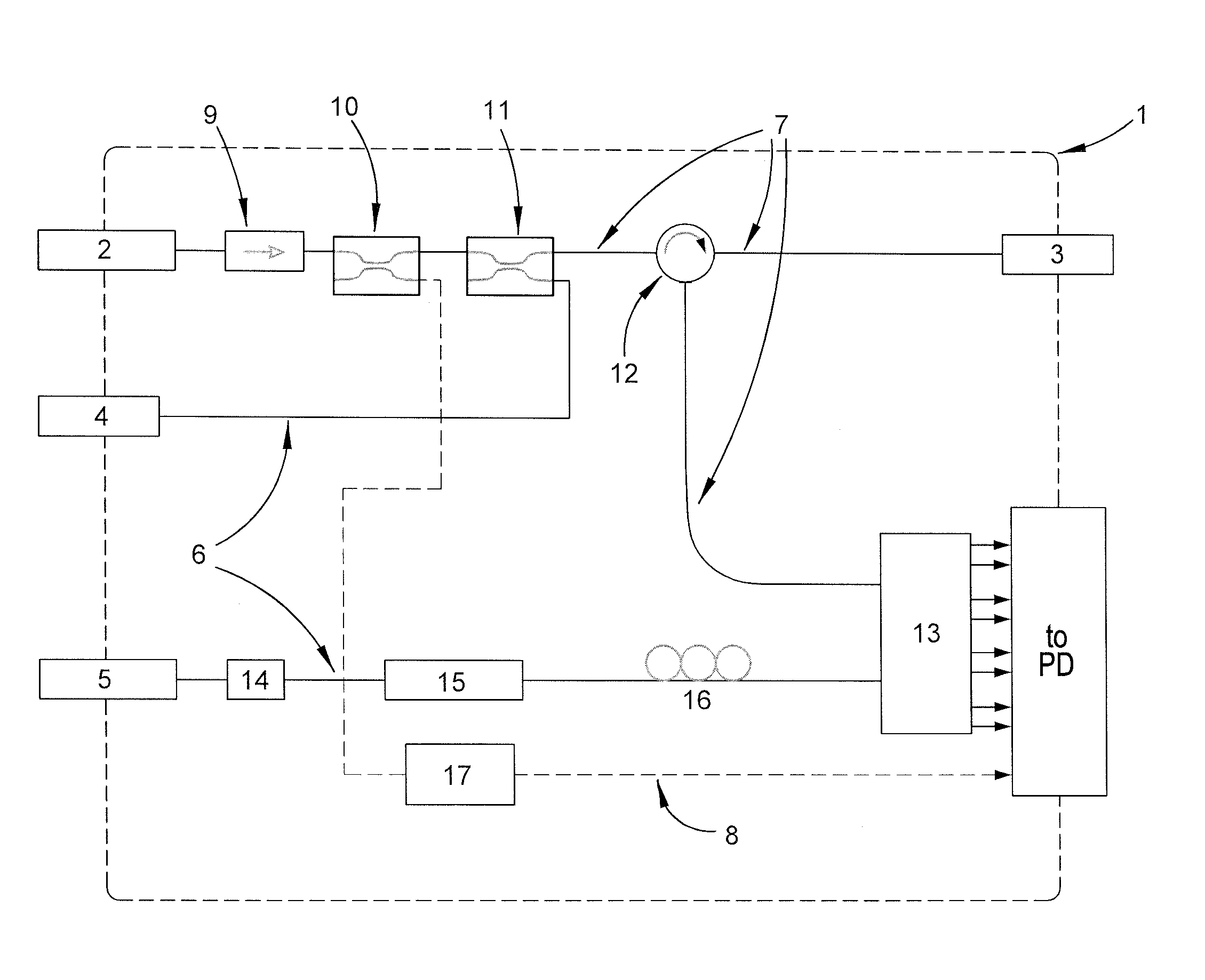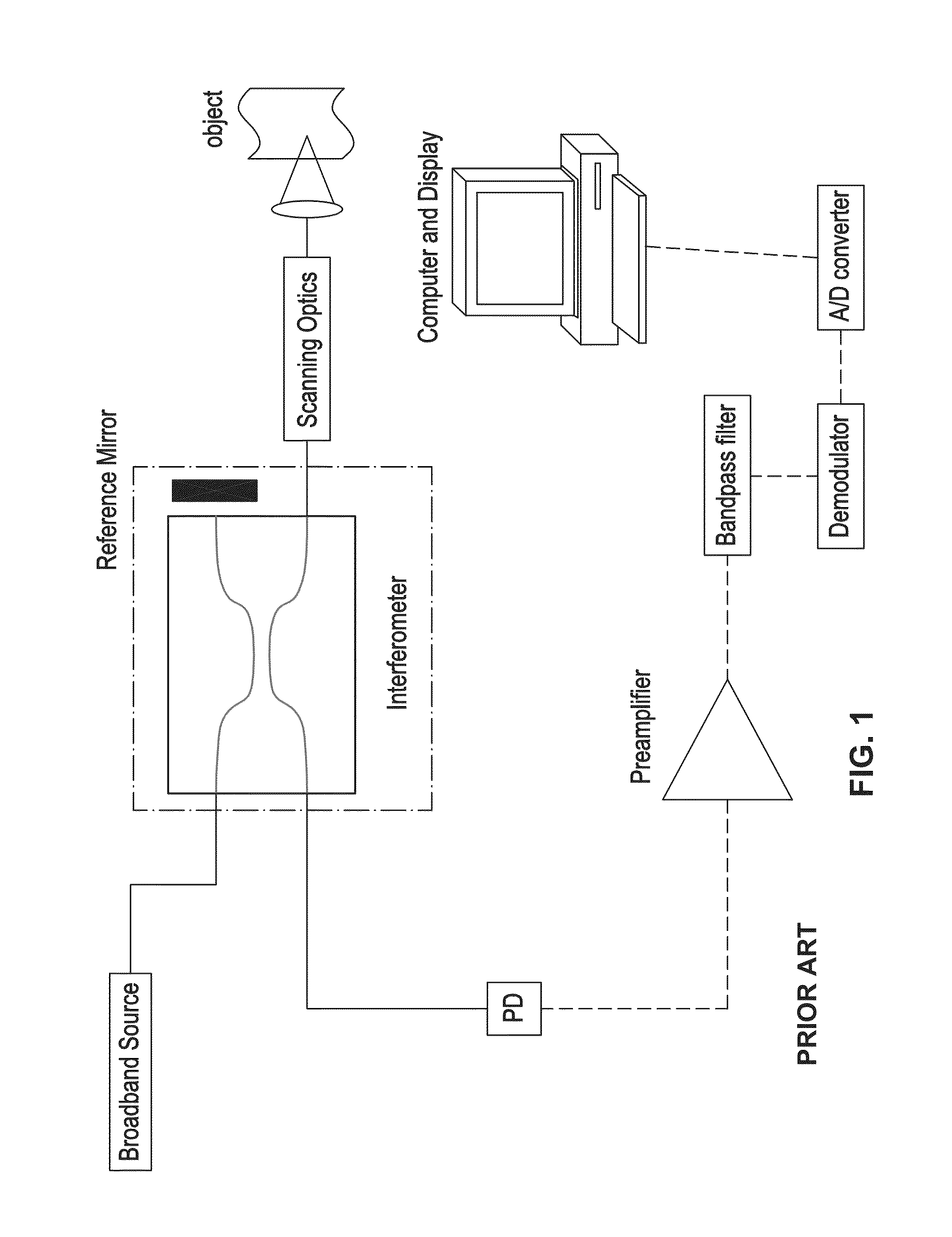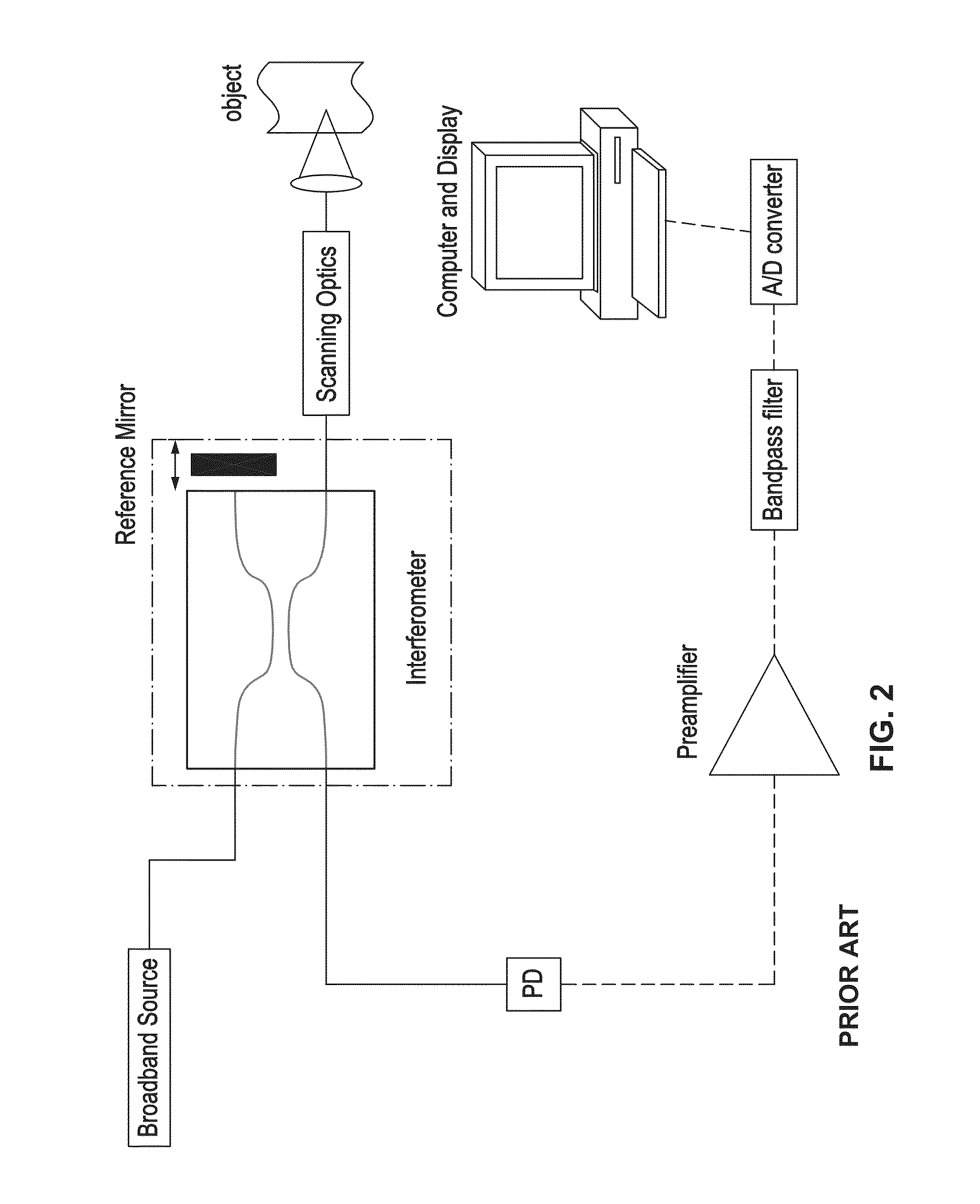Optical coherence tomography system and method
a tomography and optical coherence technology, applied in the field of detection of signals in an optical coherence tomography system, can solve problems such as reducing imaging depth, wasting resources, and known complex conjugate ambiguity
- Summary
- Abstract
- Description
- Claims
- Application Information
AI Technical Summary
Benefits of technology
Problems solved by technology
Method used
Image
Examples
example implementations
[0081]The integration of the CPA into an OCT system can be seen initially in FIG. 6 and FIG. 7. FIG. 6 and FIG. 7 show example electronic connections.
[0082]Turning initially to FIG. 6, the eight optical output ports of the CPA 13 of the optical engine 1 are connected to four balanced photo-detectors 32, each balanced photo-detector corresponding to a quadrature in each polarization. The use of balanced photo-detectors can eliminate the need for the removal of the DC bias component of the inteferometric signal later on in the processing.
[0083]FIG. 7 illustrates an alternative arrangement showing the use of standard photo-detectors 33 in the system. In this configuration the DC bias is removed later on in the signal processing.
[0084]In either case, the signal is then passed through a data acquisition card (DAQ) 34 which converts the analogue signal into a digital signal and samples it. A further photo-detector 33 connected between the trigger path 8 and the DAQ 34 is used to provide a...
example
No Quadrature Signal Implementation
[0118]The OCT systems described so far can be further simplified at the expense of reduced functionality. By ignoring the quadrature component of the signal, the receiver electronics are reduced and the resulting signal processing simplified. When the quadrature component is ignored, minor modifications to the CPA 13 remove a 3 dB signal loss, due to a further polarization splitting, but still provide the advantages associated with polarization mixing. One such modification to remove the quadrature signal is realized by removing the quarter waveplate 75 and power splitter 120 seen in FIG. 14.
PUM
| Property | Measurement | Unit |
|---|---|---|
| optical signal analysis | aaaaa | aaaaa |
| path length | aaaaa | aaaaa |
| optical paths | aaaaa | aaaaa |
Abstract
Description
Claims
Application Information
 Login to View More
Login to View More - R&D
- Intellectual Property
- Life Sciences
- Materials
- Tech Scout
- Unparalleled Data Quality
- Higher Quality Content
- 60% Fewer Hallucinations
Browse by: Latest US Patents, China's latest patents, Technical Efficacy Thesaurus, Application Domain, Technology Topic, Popular Technical Reports.
© 2025 PatSnap. All rights reserved.Legal|Privacy policy|Modern Slavery Act Transparency Statement|Sitemap|About US| Contact US: help@patsnap.com



